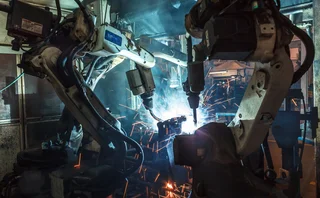December 2015: Agile: Beneficial But Not Without Its Pitfalls

Like many aspects of the capital markets, agile software development means different things to different organizations, depending on where they sit on the agile continuum. A large investment bank, for example, might dabble in agile for non-mission-critical, peripheral development, but consider the methodology largely suitable only to small, nimble organizations with modest IT budgets, embraced mostly by necessity as opposed to choice. For small organizations, however, agile might constitute the optimal development methodology for their needs, allowing them to tweak software already in a production environment with the minimum of disruption along its evolutionary path.
Barney Dalton, CTO of London-based systematic hedge fund Aspect Capital, and the subject of this month’s cover story on page 20, is a big agile proponent. “We operate on much faster cycles, so the releases we put out are much smaller, which might represent anything from hours to two weeks’ work,” Dalton explained in the interview he did recently with John Brazier. “You get much better visibility of what is in that release; you can understand all of the moving parts,” he said.
For a buy-side firm like Aspect, which places a premium on its largely proprietary technology stack, and which it constantly tinkers with in pursuit of optimization, agile makes perfect sense: There is no finish line, projects can be simplified down to a slither of the size typically associated with the waterfall model, and goals and directions can be set and reset as often as deemed necessary.
Yes, agile, through its scrums and sprints, has the potential to deliver significant benefits to capital markets firms, and thus has appreciable numbers of advocates. But it also has its shortcomings, chief among which is its tendency to lead to scope creep in the absence of a well-organized, disciplined program. Given that agile deadlines are soft at best and that one of the central tenets underpinning it is the ability to adapt to changing circumstances or requirements as projects are rolled out, there is a very real danger of not only losing sight of the original objective, but that there is no well-defined objective whatsoever, rendering the discrete bits of development being regularly churned out to something resembling an assembly line.
Clearly, agile is not for everyone, but it does deliver in areas where the waterfall method has its Achilles heel: regular, possibly even daily-delivered development, allowing end-users to benefit far earlier in the cycle than they ordinarily would, illustrating the tangible business gains to firms’ upper echelons. And that, from a CIO’s perspective, is invaluable.
Only users who have a paid subscription or are part of a corporate subscription are able to print or copy content.
To access these options, along with all other subscription benefits, please contact info@waterstechnology.com or view our subscription options here: https://subscriptions.waterstechnology.com/subscribe
You are currently unable to print this content. Please contact info@waterstechnology.com to find out more.
You are currently unable to copy this content. Please contact info@waterstechnology.com to find out more.
Copyright Infopro Digital Limited. All rights reserved.
As outlined in our terms and conditions, https://www.infopro-digital.com/terms-and-conditions/subscriptions/ (point 2.4), printing is limited to a single copy.
If you would like to purchase additional rights please email info@waterstechnology.com
Copyright Infopro Digital Limited. All rights reserved.
You may share this content using our article tools. As outlined in our terms and conditions, https://www.infopro-digital.com/terms-and-conditions/subscriptions/ (clause 2.4), an Authorised User may only make one copy of the materials for their own personal use. You must also comply with the restrictions in clause 2.5.
If you would like to purchase additional rights please email info@waterstechnology.com
More on Emerging Technologies
Bloomberg expands GenAI summary options on Terminal
The additions include an expansion of its AI-powered news summaries, as well as a new AI summary tool for company-related news content.
AI enthusiasts are running before they can walk
The IMD Wrap: As firms race to implement generative and agentic AI, having solid data foundations is crucial, but Wei-Shen wonders how many have put those foundations in.
Buy-side data heads push being on ‘right side’ of GenAI
Data heads at Man Group and Systematica Investments explain how GenAI has transformed the quant research process.
Jump Trading spinoff Pyth enters institutional market data
The data oracle has introduced Pyth Pro as it seeks to compete with the traditional players in market data more directly.
Treasury market urged to beef up operational resilience plans
NY Fed panel warns about impact of AI and reliance on critical third parties.
Waters Wavelength Ep. 339: Northern Trust Asset Management’s Jan Rohof
This week, Jan Rohof from Northern Trust Asset Management joins to discuss how asset managers and quants get more context from data.
EY and Microsoft partner to bring agentic AI to risk management
The two firms are part of a deal to bring agentic AI processes to core operations like lending, servicing and risk, starting at Eurobank.
T. Rowe taps Genesis, Cusip lawsuit, FanDuel-CME tie-up, and more
The Waters Cooler: Tokenization and private markets, EuroCTP-BMLL, StateStreet-PriceStats, and more.








